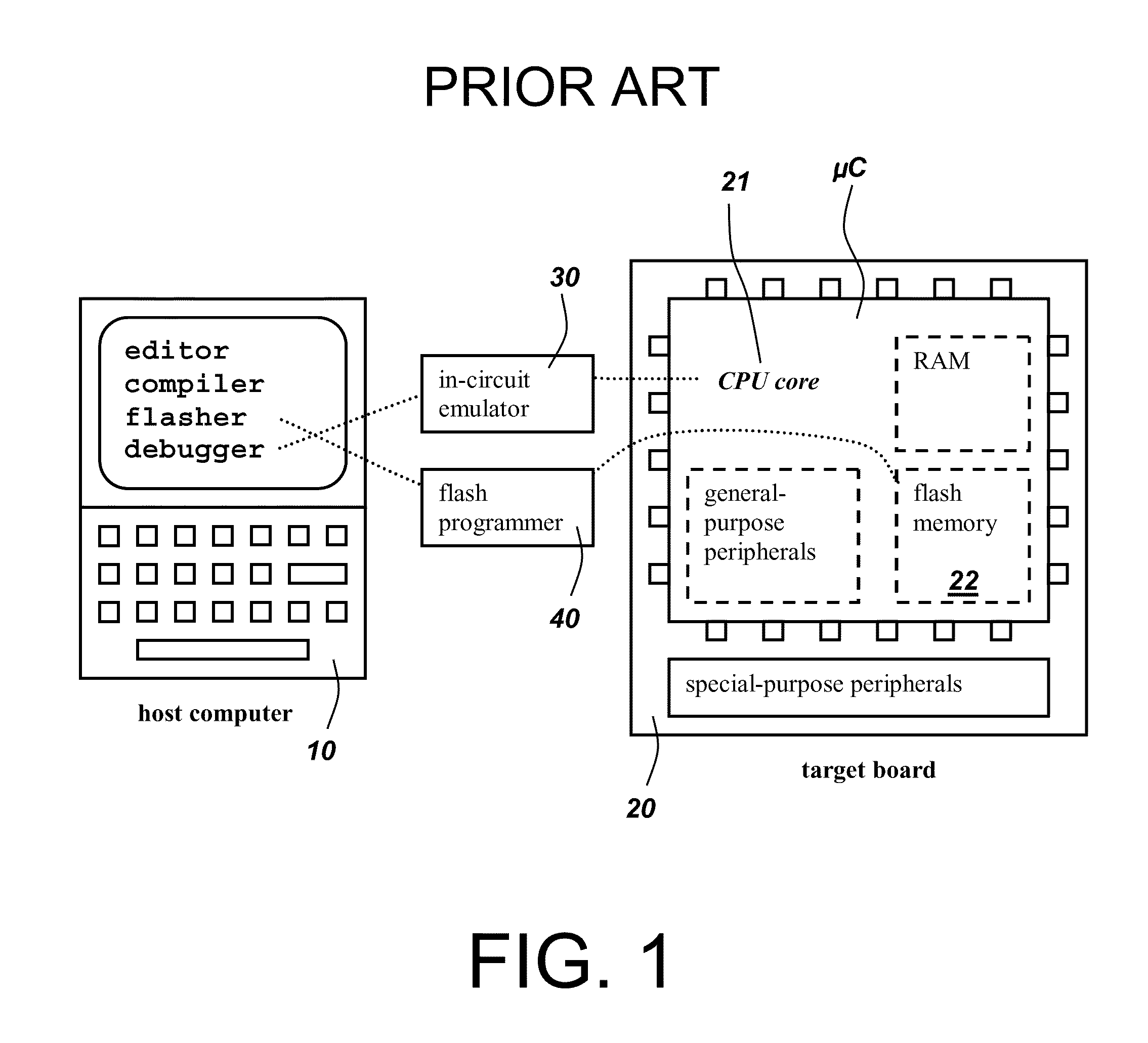Microcontroller-resident software development environment supporting application-level asynchronous event handling, interactive debugging and pin variables for embedded systems
a microcontroller and embedded system technology, applied in the field of embedded system software development environments, can solve problems such as increasing the memory requirements of the system during program developmen
- Summary
- Abstract
- Description
- Claims
- Application Information
AI Technical Summary
Benefits of technology
Problems solved by technology
Method used
Image
Examples
Embodiment Construction
[0052]This detailed description is arranged in the following order with the Section and Subsection headings indicated below:
1. Introduction to the Preferred Embodiment
2. The custom target board: CPUStick
3. The stand-alone operating system: StickOS
[0053]A. Operating System Architecture[0054]i. FTDI Transport[0055]ii. Line Editor[0056]iii. Command Interpreter[0057]iv. Bytecode[0058]v. Bytecode Compiler[0059]vi. Bytecode De-Compiler[0060]vii. Bytecode Execution Engine[0061]viii. Interrupt Service Module and Interrupt Handler[0062]ix. Interactive Debugger[0063]x. Flash Control and Access[0064]xi. RAM Control and Access[0065]xii. File System[0066]xiii. Code Access and Merge Module[0067]xiv. Pin Variables[0068]xv. External Pin Control and Access[0069]xvi. Variable Access Module
[0070]B. Operating System Commands and BASIC Features
4. The programmed computer: StickOS on CPUStick
5. Initial code load
6. Running StickOS on CPUStick
7. Cloning
8. Upgrading
9. Usage examples
10. Building StickOS from ...
PUM
 Login to View More
Login to View More Abstract
Description
Claims
Application Information
 Login to View More
Login to View More - R&D
- Intellectual Property
- Life Sciences
- Materials
- Tech Scout
- Unparalleled Data Quality
- Higher Quality Content
- 60% Fewer Hallucinations
Browse by: Latest US Patents, China's latest patents, Technical Efficacy Thesaurus, Application Domain, Technology Topic, Popular Technical Reports.
© 2025 PatSnap. All rights reserved.Legal|Privacy policy|Modern Slavery Act Transparency Statement|Sitemap|About US| Contact US: help@patsnap.com



